The Seven Year Itch caps 5
Marilyn Monroe Citation 17
I'm selfish, impatient and a little insecure. I make mistakes, I am out of control and at times hard to handle. But if you can't handle me at my worst, then you sure as hell don't deserve me at my best.
Je suis égoïste, impatiente et peu sûre de moi. Je fais des erreurs, je suis hors de contrôle et parfois difficile à gérer. Mais si vous ne pouvez pas me supporter pour le pire, nul doute que vous ne me méritez pas pour le meilleur.
Paris Match 8/04/1961
Joyeux Noël 2012
9/09/1954 NY Conférence de Presse
Le 9 septembre 1954, Marilyn Monroe reçoit des journalistes pour une conférence de presse donnée au Saint Regis Hotel où elle loge durant son séjour à New York, pour les besoins du tournage de scènes en extérieures du film "The Seven year Itch" ("Sept ans de réflexion"). Sous des airs de cocktail, cette conférence de presse, organisée par Leonard Lyons, rédacteur en chef du 'New York Post', est d'ailleurs donnée en l'honneur de Marilyn afin de marquer le début du tournage dans la ville de New York. L'acteur Tom Ewell, partenaire de Marilyn dans le film, est présent; ainsi que l'actrice Ethel Merman (partenaire de Marilyn dans "There's no business like show business" - "La Joyeuse Parade") et le compositeur Irving Berlin. De nombreux journalistes assaillent Marilyn de questions, comme Earl Wilson. Les photographes Georges Barris et Sam Shaw mitraillent Marilyn avec leurs appareils.
Marilyn porte une paire de boucles d'oreilles pendantes noires.
On September 9, 1954, Marilyn Monroe meets the journalists for a press conference, organised by Leonard Lyons from the 'New York Post', to mark the beginning of the shooting of "The Seven Year Itch" in New York City. Tom Ewell, Ethel Merman, Irving Berlin and Earl Wilson are presents. The photographers are Georges Barris and Sam Shaw.
> photographies de George Barris

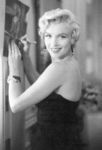
























* * * * * * * * * * * * * * * * * * * * * * * * * * * *
> Conférence / Cocktail au Saint Regis




> Marilyn avec Earl Wilson et Ethel Merman
> Marilyn avec Earl Wilson et Irving Berlin 
> Marilyn et d'autres journalistes




> Déjeuner à "La Petite Cuvée" avec Milton Greene

Marilyn change de boucles d'oreilles, pour porter des longues boucles pendantes blanches et scintillantes.
Elle donne une interview au journaliste Ed Wallace dans sa suite du Saint Regis.
She gives an interview to Ed Wallace at her Saint Regis Hotel Suite.
> photographies de Phil Stanziola

* * * * * * * * * * * * * * * * * * * * * * * * * * * *
Marilyn va prendre ensuite un verre au restaurant Billy Reed's en compagnie de Leonard Lyons, l'acteur David Wayne, Milton Greene, le dramaturge Sidney Kingsley et le restaurateur Billy Reed.
She has a drink to Billy Reed's with Leonard Lyons, David Wayne, Milton Greene, Sidney Kingsley and Billy Reed.
* * * * * * * * * * * * * * * * * * * * * * * * * * * *
Puis Marilyn se rend au Saint James Theater, pour assister à la pièce 'The Pajama Game', où elle se rend après dans les coulisses des loges pour rencontrer les acteurs -dont Carol Haynes.
She goes after to the Saint James Theater to see the play "The Pajama Games", where she meets the comedians (like Carol Haynes) in the backstage.
> Dans la salle du St James Theater
photographies de Sam Shaw 


> Dans les loges du St James Theater
photographies de Sam Shaw 









* * * * * * * * * * * * * * * * * * * * * * * * * * * *
Dîner au restaurant Sardi's avec David Wayne (son partenaire dans "Comment épouser un millionaire"), Leonard Lyons (critique à NBC, père de Jeffrey Lyons), et Milton Greene, qui va les photographier à table.
Dinner at the Sardi's restaurant with David Wayne (partner in "How to Marry a Millionaire"), Leonard Lyons (movie critic on NBC, father of Jeffrey Lyons), and Milton Greene, who photographs them.
Séance "Candids"
- Milton H Greene -
> photographies de Milton Greene












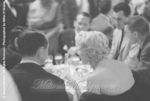

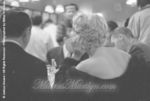
* * * * * * * * * * * * * * * * * * * * * * * * * * * *
Enfin, Marilyn enfile sa veste en fourrure pour terminer sa soirée au Club 21 avec Milton Greene, qui va la photographier à table.
She goes finally to the Club 21, with Milton Greene who takes photos of her.
> En voiture (par James Collins des Monroe Six) 










> En voiture (collection Frieda Hull) 






All photos are copyright and protected by their respective owners.
copyright text by GinieLand.
Décès de Hal Schaefer
Le pianiste Hal Schaefer, qui fut le coach vocal de Marilyn et l'un de ses amants, est mort ce 8 décembre 2012 à l'âge de 87 ans.
Hal Schaefer, jazz piano virtuoso and onetime love of Marilyn Monroe, dies
publié le 19 décembre 2012
en ligne sur washingtonpost.com
In the early 1950s, the virtuosic jazz pianist Hal Schaefer was working behind the scenes at the 20th Century Fox studio in Hollywood as a musician, musical arranger and vocal coach. He tutored many film stars in the finer points of singing, but none more glamorous than Marilyn Monroe. The two became lovers, which is how the little-known Mr. Schaefer became embroiled in a Hollywood scandal involving three of the biggest celebrities of the time: Monroe, Joe DiMaggio and Frank Sinatra.
 Mr. Schaefer, who was 87 when he died Dec. 8 at his home in Fort Lauderdale, Fla., worked with musical greats as a young man. He performed in nightclubs alongside Duke Ellington, who once introduced Mr. Schaefer by saying, “And now you’re going to hear a real piano player.” In his teens, Mr. Schaefer held the piano chair in groups led by trumpeter Harry James, saxophonist Benny Carter and progressive bandleader Boyd Raeburn.
Mr. Schaefer, who was 87 when he died Dec. 8 at his home in Fort Lauderdale, Fla., worked with musical greats as a young man. He performed in nightclubs alongside Duke Ellington, who once introduced Mr. Schaefer by saying, “And now you’re going to hear a real piano player.” In his teens, Mr. Schaefer held the piano chair in groups led by trumpeter Harry James, saxophonist Benny Carter and progressive bandleader Boyd Raeburn.
In Hollywood, he received an assignment to help Monroe and co-star Jane Russell prepare for their roles in “Gentlemen Prefer Blondes,” a 1953 musical comedy directed by Howard Hawks.
Having worked with Peggy Lee, Billy Eckstine and other singers, Mr. Schaefer coached Monroe as if she were an aspiring jazz or cabaret vocalist. He asked her to listen to recordings by Ella Fitzgerald, then led her through private rehearsals at a bungalow on the studio lot.
Working closely with choreographer Jack Cole, Mr. Schaefer arranged the music for Monroe’s four-minute production number “Diamonds Are a Girl’s Best Friend.” It became the show-stopping centerpiece of “Gentlemen Prefer Blondes” and helped secure Monroe’s reputation as a mesmerizing screen goddess.
Meanwhile, Mr. Schaefer kept busy in Hollywood, tutoring Judy Garland, Mitzi Gaynor and others. He worked again with Monroe on the 1954 film “There’s No Business Like Show Business,” arranging her sensuous number “Heat Wave.” (Mr. Schaefer occasionally appeared on screen in uncredited roles, including in the 1954 western “River of No Return,” in which he was a saloon pianist in a scene in which Monroe strums a guitar and sings a haunting tune, “One Silver Dollar.”)
In January 1954, Monroe married baseball star DiMaggio, but the marriage was a success only in the Hollywood publicity mills. Mr. Schaefer said Monroe confided to him and others that DiMaggio had beaten her.
“He did physically abuse her, and that’s what enraged me so much that I was willing to go and confront him, because I truly loved her,” Mr. Schaefer said in a 2001 documentary, “The Many Loves of Marilyn Monroe.”
“I was on my way to confront him,” he added, “but she said he would make dog meat out of me, so she stopped me from going.”
On Oct. 27, 1954, nine months after they were married, Monroe and DiMaggio divorced. The next week, on Nov. 5, she and Mr. Schaefer had a rendezvous at the West Hollywood apartment of one of Monroe’s friends. DiMaggio was dining that night with Sinatra when they got word of the liaison. In the documentary, Mr. Schaefer said he and Monroe “were very close to making love” when Monroe had a suspicion of danger.
“We went over to the window, and we saw this group standing across the street,” Mr. Schaefer recalled. “One of them was Joe DiMaggio, and another was Frank Sinatra. They all came en masse and broke this door in, demolished it. It sounded like an explosion.” But the door they smashed in belonged to the neighboring apartment. A 39-year-old secretary was asleep in bed and screamed at the intruders. “We scrambled to get out the back way,” Mr. Schaefer later said, “and we made it, luckily.”
The episode did not become common knowledge until the next year, when a Los Angeles gossip magazine disclosed some of the details of what became known as the “Wrong Door Raid.”
As Mr. Schaefer began to gain renown as a jazz pianist with several well-received albums, the effects of the scandal soon overtook his career. Warned that henchmen associated with DiMaggio and Sinatra were planning to break his hands, Mr. Schaefer fled Hollywood in the late 1950s and moved to New York. He never saw Monroe again.
Harold Herman Schaefer was born July 22, 1925, in Queens. He began to pick out tunes on the piano by ear when he was 4 and studied classical music for several years until he heard a record by jazz pianist Art Tatum, whose rapid-fire brilliance he sought to emulate.
After his Hollywood years, Mr. Schaefer settled in New York and became a record-company executive, responsible for signing and developing performers for the United Artists label. He also wrote and arranged music for Broadway productions, including “A Funny Thing Happened on the Way to the Forum” (1962).
All the while, he continued to teach singing. One of Mr. Schaefer’s prize pupils in New York was a teenage Barbra Streisand. He also worked with stage stars Chita Rivera, Rita Moreno and Julie Wilson.
Mr. Schaefer spoke privately about his association with Monroe, but he did not go public with his account until after DiMaggio’s death in 1999 in Hollywood, Fla. – 10 miles from Mr. Schaefer’s home.
 After battling prostate cancer for years, Mr. Schaefer died Dec. 8 of congestive heart failure, a friend, Laura Parker, confirmed.
After battling prostate cancer for years, Mr. Schaefer died Dec. 8 of congestive heart failure, a friend, Laura Parker, confirmed.
Survivors include a brother and a grandson. His first marriage, to Leah Cahan, ended in divorce. Their daughter, Katherine Charap, died in June. In 1974, Mr. Schaefer married Brenda Goodman. She died in 2000.
After her death, Mr. Schaefer had her life dates tattooed on the inside of his left forearm: June 1, 1937-April 7, 2000.
In 2001, Mr. Schaefer dedicated an album, “A Date to Remember,” to the two great loves of his life, Monroe and his late wife, Brenda. The women shared the same birthday.
> Site Officiel halschaefer.com
Les critiques de The Prince and the Showgirl
Le prince et la danseuse
Les critiques
The New York Times
Nous nous devons de vous dire que Miss Monroe n'ôte jamais sa robe et que Mr. Rattigan ne sort jamais du cercle vicieux dans lequel il a laissé sa maigre intrigue tomber. (...) Il n'a pas permis au film de faire davantage que de tourner en rond, encore et encore, pour s'achever sur une note triste.
New York Herald Tribune
A condition de ne pas le prendre au sérieux, 'Le Prince et la danseuse' est extrêmement divertissant. C'est assurément ce que voulait son auteur, Terrence Rattigan. Il s'amuse, nous offrant deux heures de distraction, et les acteurs ont un plaisir immense à jouer cette farce. Ils s'efforcent de garder leur sérieux, mais une étincelle dans leurs yeux suffit à les trahir.
Dans le cas de Laurence Olivier, cette étincelle doit vaincre l'obstacle d'un épais monocle pour être perceptible, et elle y parvient. Un humour subtil caractèrise son interprétation. (...) Le rôle de Marilyn est bien moins nuancé. Son personnage est celui d'une danseuse de music-hall aimable et sotte, mais rien de plus. Tout au long du film, aux rires, à l'innocence puérile, aux gloussements de plaisir et aux moues ennuyées de Miss Monroe, succèdent les roulements d'yeux grands comme des soucoupes, sans oublier les très plaisantes ondulations d'un corps tout en courbes.
New York World-Telegram and Sun
Les hauts et les bas imprévisibles qui ont marqué jusqu'à présent la carrière d'actrice de Marilyn Monroe, promettent de déboucher sur un triomphe dans 'Le prince et la danseuse'. (...) Cette charmante comédie n'a d'égale que la surprise que nous révèle Marilyn. Partenaire principal et réalisateur, Laurence Olivier révèle des dons auxquels les précédents films de l'actrice ne nous avaient pas habitués. Sa gaieté communicative est d'une folle espièglerie. Elle joue les scènes d'amour comme s'il s'agissait de jeux de petite fille. Elle interprète cette comédie bouffonne sans effort et tourne les moments solennels à la plaisanterie.
The Los Angeles Times
C'est, j'en suis sûr, la meilleure oeuvre cinématographique de Miss Monroe. Sous la direction de Laurence Olivier, elle révèle un véritable talent comique. Elle prouve également qu'elle peut désormais attirer l'attention autrement qu'avec sa célèbre démarche chaloupée.
New York Post
En tant qu'individu et actrice comique, Marilyn Monroe n'a jamais semblé aussi sûre d'elle-même. Elle réussit à faire rire sans sacrifier la véritable Marilyn à la comédie; c'est bien évidemment le propre à de grands artistes, talentueux et expérimentés. La surprise est d'autant plus agréable que Marilyn Monroe a été jusqu'à présent moitié actrice, moitié phénomène.

/image%2F1211268%2F20240315%2Fob_782fd3_banner-mm-2024-03-spring-5.jpg)
/image%2F1211268%2F20240410%2Fob_40c4f9_blog-gif-mm-niagara-1-3.gif)

/image%2F1211268%2F20240417%2Fob_0b0d56_2024-03-lee-mexique.jpg)
/https%3A%2F%2Fstorage.canalblog.com%2F19%2F65%2F312561%2F91436129_o.jpg)
/https%3A%2F%2Fstorage.canalblog.com%2F57%2F63%2F312561%2F127743382_o.jpg)
/https%3A%2F%2Fstorage.canalblog.com%2F98%2F05%2F312561%2F84823731_o.jpg)
/https%3A%2F%2Fstorage.canalblog.com%2F01%2F63%2F312561%2F84814201_o.jpg)
/https%3A%2F%2Fstorage.canalblog.com%2F66%2F21%2F312561%2F82823948_o.jpg)
/https%3A%2F%2Fstorage.canalblog.com%2F32%2F31%2F312561%2F124125043_o.jpg)
/https%3A%2F%2Fstorage.canalblog.com%2F31%2F08%2F312561%2F71448014_o.jpg)
/https%3A%2F%2Fstorage.canalblog.com%2F34%2F90%2F312561%2F81829009_o.jpg)
/https%3A%2F%2Fstorage.canalblog.com%2F18%2F35%2F312561%2F61120383_o.jpg)
/image%2F1211268%2F20240410%2Fob_9f471d_blog-gif-mm-syi-1.gif)

























































































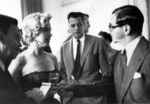







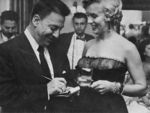











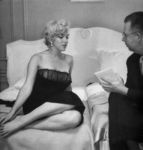
































/image%2F1211268%2F20240229%2Fob_66f2c6_tag-mm-public-martin-lewis-show-1.png)
/image%2F1211268%2F20240410%2Fob_07cb4a_blog-gif-mm-stern-1.gif)
/image%2F1211268%2F20240229%2Fob_143453_blog-gif-video.gif)
/image%2F1211268%2F20240301%2Fob_735dec_blog-liens-culture.jpg)

/image%2F1211268%2F20240302%2Fob_e11252_blog-liens-friends-jane.gif)